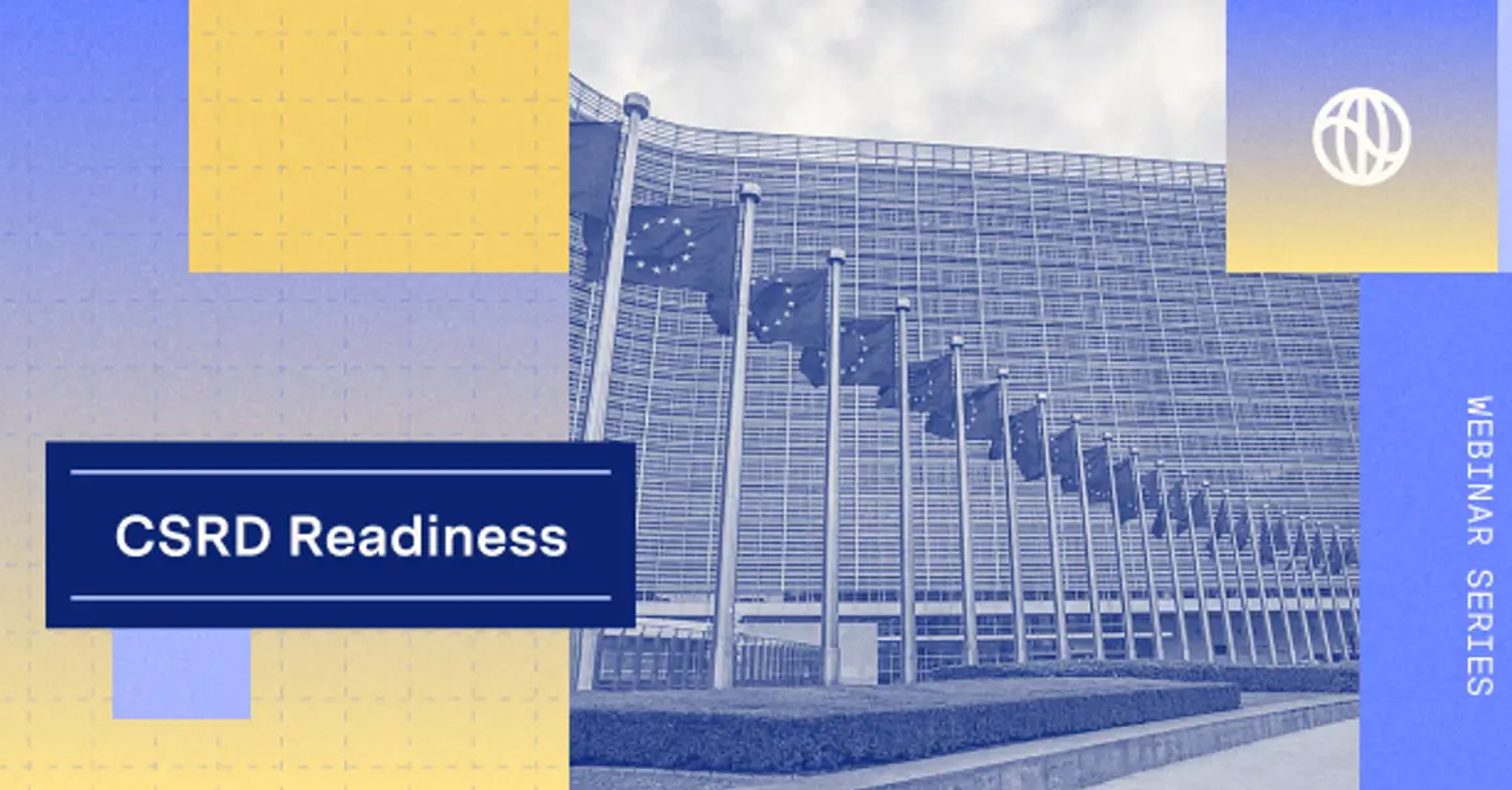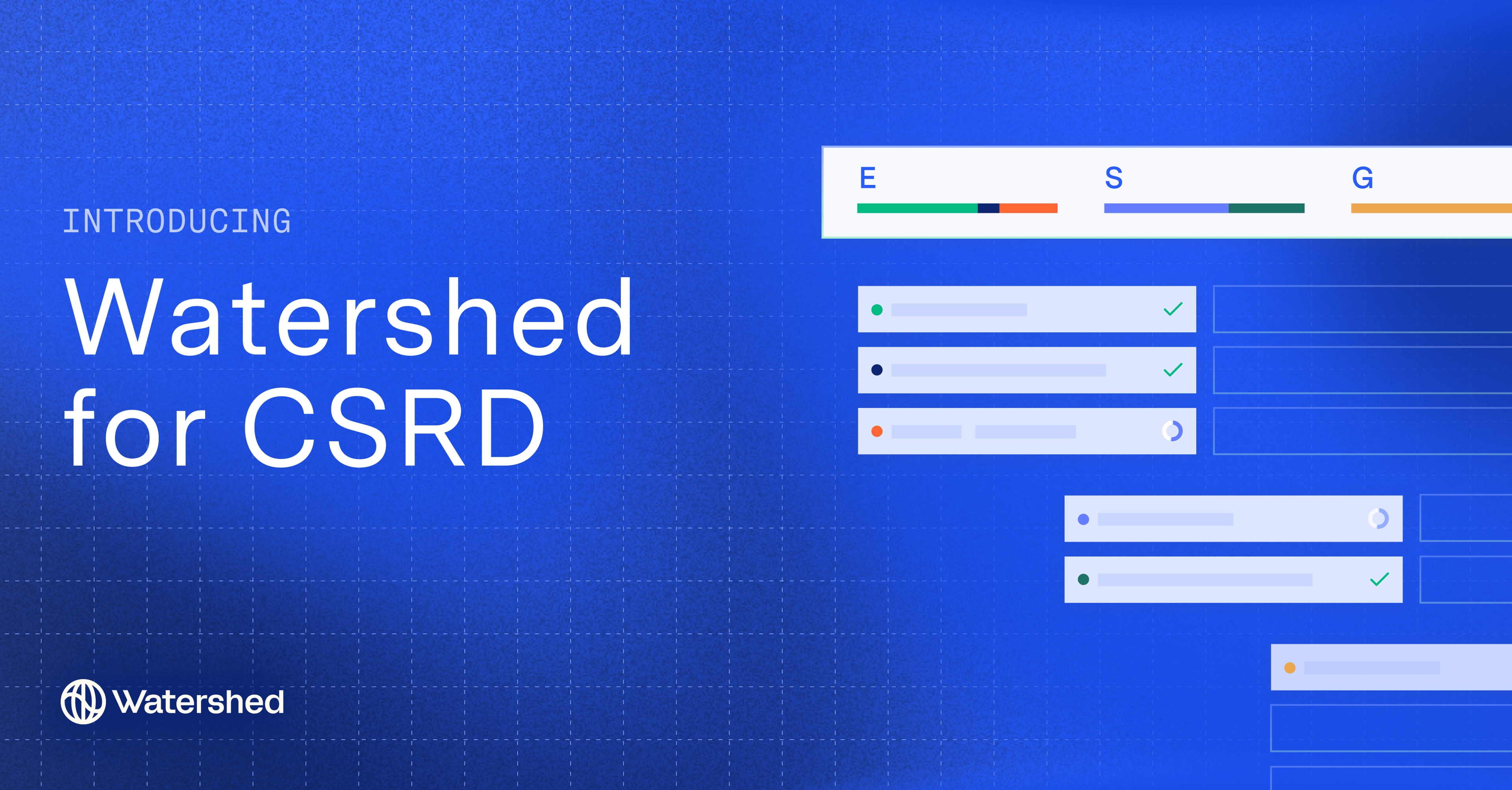“I think the biggest misconception about transition plans is that they are stagnant documents that are reported, and then can sit on a shelf,” says David Ross, a managing director of KPMG’s Sustainability Advisory Group.”
Instead, transition plans are living, dynamic, distillations of business strategy, as Ross and other experts made clear in our recent panel discussion on transition plan requirements for companies.
With global climate regulation evolving from requiring emissions disclosures to requesting transition plans, more companies are realizing that these complex documents aren’t just a box to check.
“The transition plan is really part of a corporate strategy,” continues Ross. “That means it has to be an iterative plan as your company continues to evolve, and your business model changes.”
Keep reading for expert advice on how to create a transition plan—and the regulations that will soon make them mandatory for many companies.
Transition plan basics
A climate transition plan is a document that shows how your business strategy and model are:
- Compatible with a low-carbon economy.
- In line with the Paris Agreement goal of limiting global warming to 1.5° Celsius.
- Aligned with the objective of achieving climate neutrality by 2050.
The format may differ between companies. Some companies produce a standalone transition plan, while others choose to integrate it with their ESG or Annual Report.
Whatever format it takes, the plan should contain targets, actions, and key strategic decisions to align your business model with the transition to a sustainable economy.
“It's a corporate strategy,” says Ross, “so it has to involve everyone throughout the company —from legal, to finance, to procurement, to research and design, all the way up to the board.”
A transition plan differs from other decarbonization roadmaps and reduction plans in three key ways:
- It does not need to be produced annually—the recommendation is every three years, and/or when your business goes through a major change in strategy.
- It is likely to be longer and more complex.
- It has executive-level buy-in rather than living solely with your sustainability team.
“What a transition plan attempts to do,’ explains Megan Schlosser, climate adviser at Watershed, “is take that decarbonization roadmap and that reduction plan and put it into the greater context of your overall business strategy. It's about asking questions like, ‘Have you engaged your financial planning team? Have you thought about your decarbonization levers in the greater context of your business strategy, and your plans to expand XYZ product line?’”
Transition plans let regulators and other market actors see how a firm is moving beyond traditional sustainability reporting and into strategic planning.
Regulations that include transition plans
Transition plans are now part of both regulatory and voluntary reporting frameworks, as global regulators work to align climate disclosure objectives.
A company with global operations can generally use the same transition plan across different businesses and jurisdictions. The goal of the transition plan is to increase transparency about the company's operations and vision, not to generate reports for the sake of it.
Transition plans are included in the following reporting regulations:
UK TPT
The UK Transition Plan Taskforce aims to help organizations set out credible and robust climate transition plans. The UKTPT transition plan framework is considered the best-in-class standard for building and disclosing your plan.
CSRD
The Corporate Sustainability Reporting Directive (CSRD) requires you to either disclose your transition plan or explain why you have not done so. Your CSRD transition plan should outline your company's strategy to address climate impact and prepare for climate risks. This includes setting out clear targets, actions, and timelines for reducing emissions and transitioning to a sustainable business model.
CSDDD
Unlike the CSRD, the Corporate Sustainability Due Diligence Directive does require companies to have a transition plan. CSDD’s transition plan requirement can be reported through CSRD reporting.
Building a transition plan
As you build your plan, remember that you will not have all the answers immediately and that this is an iterative process that will evolve as you do it.
The key steps to get started include:
Manage executive expectations
“It begins with the tone from the top,” says David Carlin, founder of Cambium Global Solutions, who led the creation of UNEP Finance Initiative’s risk programming.
“It begins with the recognition that this needs to be consonant with what you are doing strategically and operationally. Otherwise, it's just a story that you're putting together.”
This means making sure from the outset that the executives in your company are fully on board with what creating the transition plan will entail. This is not simply a document to sign off on but a strategic plan to follow through.
Do your research
The UK TPT guidance is generally considered to be the most comprehensive guide on transition planning and makes a great starting point.
You’ll also want to refer to the EU taxonomy. This is essentially a classification system that identifies sustainable economic activities and requires companies to express their financials concerning these activities, many of which help companies begin or accelerate their transition.
Prepare a clear end-product
Lead with a 1-2 page executive summary that addresses the global strategy outlined in your plan.
Then divide the rest of your material into clear sections. The UK TPT guidance suggests:
- Foundations
- Implementation strategy
- Engagement strategy
- Metrics & Targets
- Governance
Use appendices or ESG indices to add additional information, rather than cramming too much content into the main body of the report. And steer away from lengthy narratives – try to use visuals as much as possible to break up the text.
Remember that while a transition plan is the end product of this process, it isn't a traditional, done-and-dusted report. It is a document that will continue breathing life into the strategic direction of your company.
Transition plans: the big picture
Given the large scope of transition plans, it’s easy to lose sight of the value of this evolving document. This isn’t a box-checking exercise but an opportunity for transformation.
“It's not just saying, tell me about what your risks are and how you see them emerging,” Carlin reminds us. “But tell me what you plan to do. Who will you be? Because the transition plan can be a transition to a new form of business.”
With a transition plan in place, your company will:
- Be part of the vital shift to a sustainable economy
- Help to limit global warming to 1.5°C
- Make real strides on the collective path to net zero by 2050.
The benefits of moving beyond traditional disclosure to formulating a transition plan are significant, both for your business and for effecting real change in the world.
Ensuring you start with the right data will make your transition planning easier. Watershed delivers granular, audit-ready sustainability data that companies can disclose with confidence.
FAQs
Is transition planning relevant for companies that are less carbon-intensive?
Yes. We are all doing our part to move to a low-carbon economy, so transition planning is equally relevant for less carbon-intensive companies. However, it is likely to be a lighter lift than for the more carbon-intensive companies.
Should targets be set after a baseline assessment and transition strategy to ensure feasibility? Or does setting a target first help to galvanize ambitious action?
Companies have followed both approaches but they risk accusations of greenwashing if they publicize a target that they don’t know how to meet. Companies should set a target internally but be sure to have a clear roadmap of how to get there before publicizing it. While transition planning may not bind companies to a particular path or target, it is important that the right intention and effort are there.
Increasing numbers of scientists suggest that the 1.5°C limit is now unrealistic. What does this mean for transition plans, which are meant to be developed in line with 1.5°C?
The threshold of 1.5°C refers to an average over a decade and a temperature by 2100. Setting a pathway to 1.5°C is therefore not negated by a one-time breach and the IPCC makes it clear that every fraction of a degree counts. Some mitigation is better than no mitigation, and therefore the prospect of exceeding 1.5°C makes the case for transition plans stronger.







